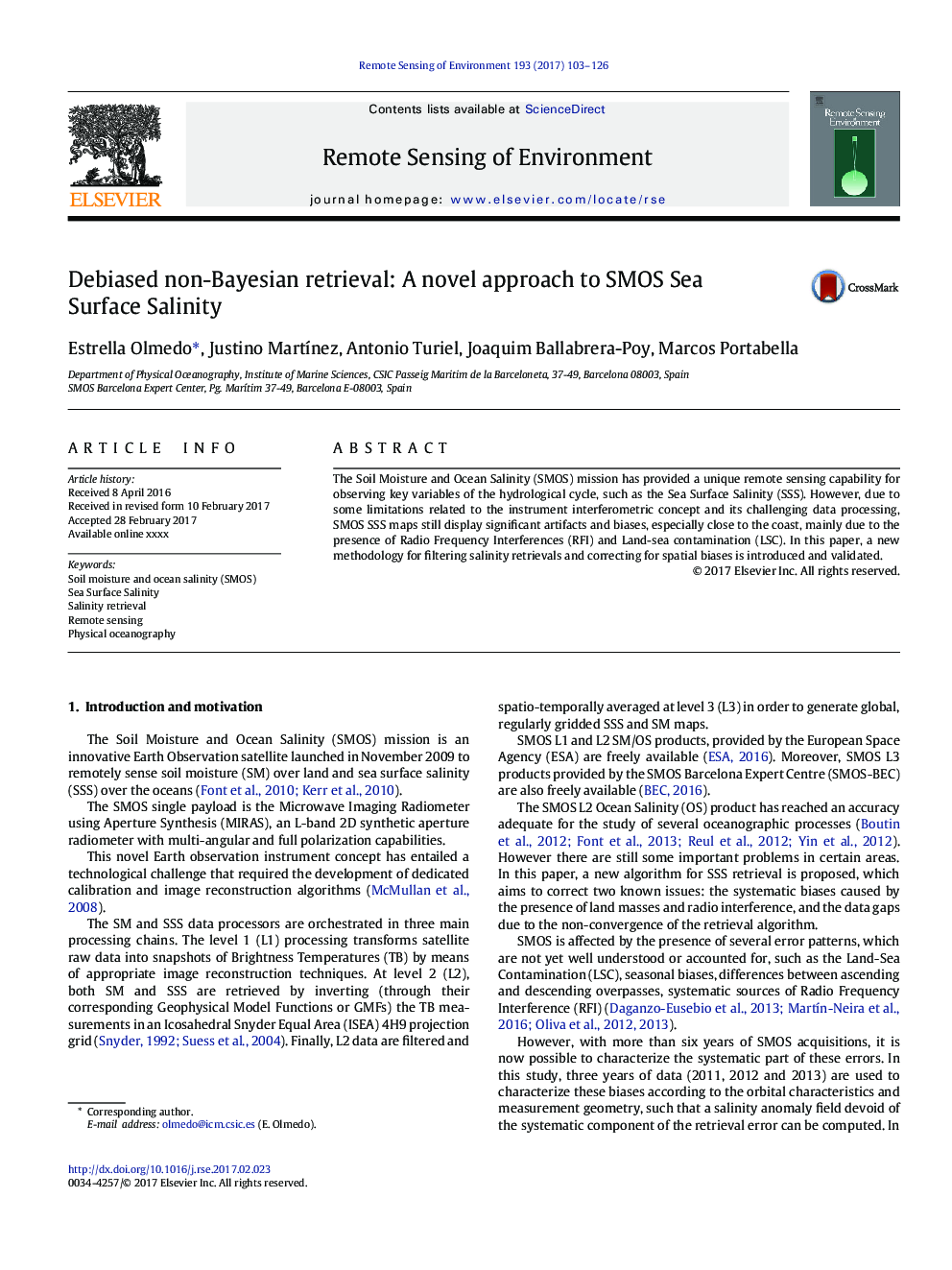| Article ID | Journal | Published Year | Pages | File Type |
|---|---|---|---|---|
| 5754701 | Remote Sensing of Environment | 2017 | 24 Pages |
Abstract
The Soil Moisture and Ocean Salinity (SMOS) mission has provided a unique remote sensing capability for observing key variables of the hydrological cycle, such as the Sea Surface Salinity (SSS). However, due to some limitations related to the instrument interferometric concept and its challenging data processing, SMOS SSS maps still display significant artifacts and biases, especially close to the coast, mainly due to the presence of Radio Frequency Interferences (RFI) and Land-sea contamination (LSC). In this paper, a new methodology for filtering salinity retrievals and correcting for spatial biases is introduced and validated.
Keywords
Related Topics
Physical Sciences and Engineering
Earth and Planetary Sciences
Computers in Earth Sciences
Authors
Estrella Olmedo, Justino MartÃnez, Antonio Turiel, Joaquim Ballabrera-Poy, Marcos Portabella,
